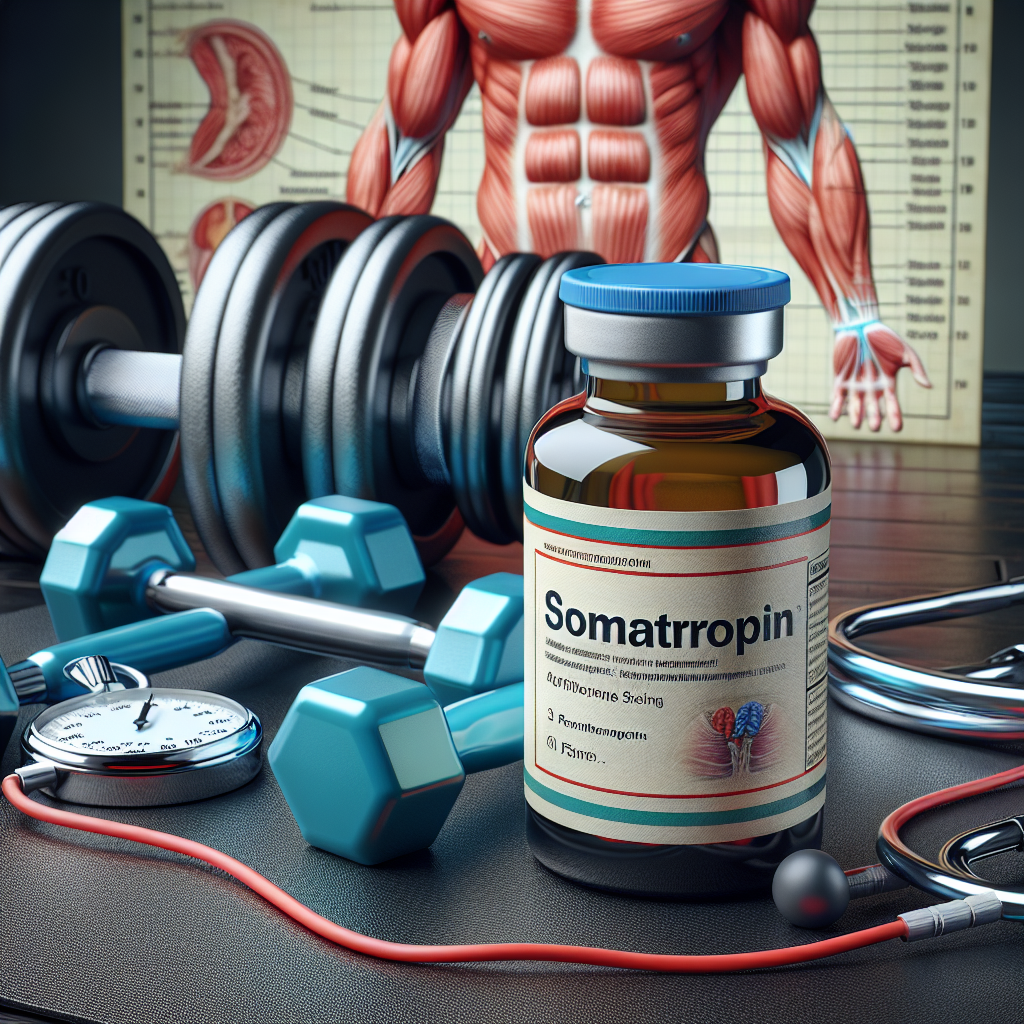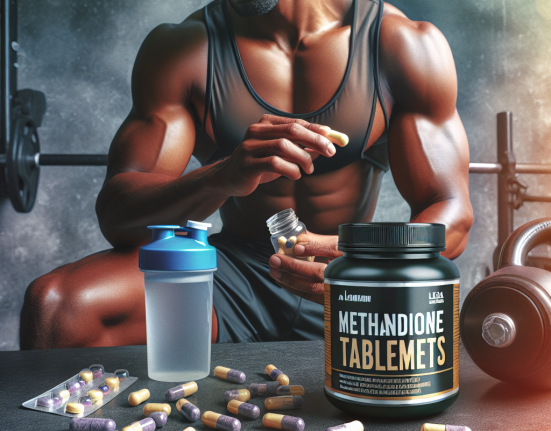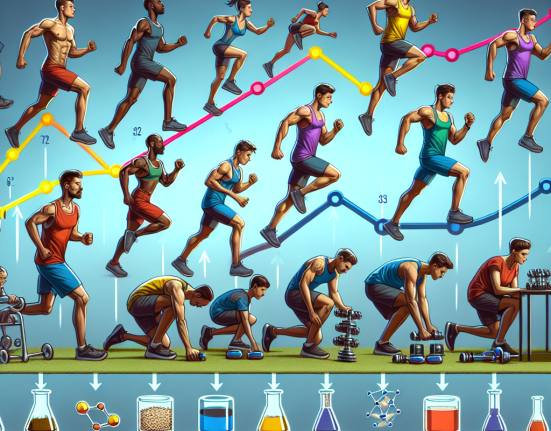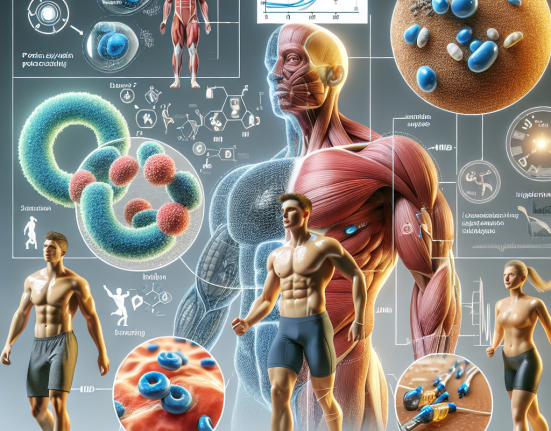-
Table of Contents
Somatropin: Enhancing Physical Performance
Somatropin, also known as human growth hormone (hGH), has been a topic of interest in the world of sports for its potential to enhance physical performance. This naturally occurring hormone is responsible for growth and development in humans, but it has also been found to have performance-enhancing effects when used exogenously. In this article, we will explore the pharmacokinetics and pharmacodynamics of somatropin, its potential benefits and risks, and the current regulations surrounding its use in sports.
The Science Behind Somatropin
Somatropin is a peptide hormone that is produced by the pituitary gland. It is composed of 191 amino acids and is responsible for stimulating growth and cell reproduction in humans. Its primary function is to regulate the body’s metabolism, promote tissue growth, and maintain organ function. However, it has also been found to have anabolic effects, making it a popular substance among athletes looking to improve their physical performance.
When somatropin is administered exogenously, it enters the bloodstream and binds to specific receptors on target cells, triggering a cascade of events that ultimately lead to increased protein synthesis and tissue growth. This process is known as the somatotropic axis and involves the release of insulin-like growth factor 1 (IGF-1) from the liver, which is responsible for many of the anabolic effects of somatropin.
Pharmacokinetics of Somatropin
The pharmacokinetics of somatropin can vary depending on the route of administration. When injected subcutaneously, somatropin has a half-life of approximately 3-4 hours, meaning it is quickly cleared from the body. However, when administered intravenously, the half-life is extended to 20-30 minutes, allowing for a longer duration of action.
Studies have shown that the bioavailability of somatropin is around 75% when injected subcutaneously, meaning that 75% of the administered dose reaches the systemic circulation. This is due to the fact that somatropin is a large peptide molecule that cannot be absorbed through the gastrointestinal tract and must be injected for effective absorption.
Pharmacodynamics of Somatropin
The pharmacodynamics of somatropin are complex and involve multiple pathways. As mentioned earlier, somatropin stimulates the release of IGF-1, which is responsible for many of its anabolic effects. IGF-1 promotes cell growth and division, increases protein synthesis, and enhances the uptake of amino acids by muscle cells.
Somatropin also has direct effects on fat metabolism, promoting the breakdown of stored fat and increasing the use of fatty acids as an energy source. This can lead to a decrease in body fat and an increase in lean muscle mass, making it an attractive substance for athletes looking to improve their body composition.
Potential Benefits and Risks
The potential benefits of somatropin for athletes are numerous. It has been shown to increase muscle mass, strength, and endurance, making it a popular substance among bodybuilders and other strength athletes. It can also improve recovery time and reduce the risk of injury, allowing athletes to train harder and more frequently.
However, with these potential benefits come risks. The use of somatropin has been linked to a number of adverse effects, including joint pain, carpal tunnel syndrome, and insulin resistance. It has also been associated with an increased risk of cardiovascular disease and certain types of cancer. These risks are amplified when somatropin is used in high doses or for prolonged periods.
Furthermore, the use of somatropin in sports is considered cheating and is banned by most sports organizations. Athletes who are caught using somatropin can face severe consequences, including suspension and loss of medals or titles. This is due to the unfair advantage it can provide in terms of physical performance.
Regulations Surrounding Somatropin Use in Sports
The use of somatropin in sports is strictly regulated by various organizations, including the World Anti-Doping Agency (WADA) and the International Olympic Committee (IOC). These organizations have banned the use of somatropin in sports due to its performance-enhancing effects and potential health risks.
However, there have been cases where athletes have been granted therapeutic use exemptions (TUEs) for somatropin. These exemptions are only granted if an athlete has a medical condition that requires the use of somatropin and can provide sufficient evidence to support its use. Even with a TUE, athletes are subject to strict monitoring and must adhere to specific dosage and administration guidelines.
Real-World Examples
The use of somatropin in sports has been a controversial topic for many years. One notable example is the case of former professional cyclist Lance Armstrong, who admitted to using somatropin as part of his doping regimen. Armstrong’s use of somatropin, along with other banned substances, helped him win seven consecutive Tour de France titles before he was stripped of his titles and banned from the sport.
Another example is the case of baseball player Alex Rodriguez, who was suspended for the entire 2014 season for using somatropin and other performance-enhancing drugs. These high-profile cases have shed light on the prevalence of somatropin use in professional sports and the need for stricter regulations and testing.
Expert Opinion
While somatropin may have potential benefits for athletes, its use in sports is highly controversial and strictly regulated. The risks associated with its use, both in terms of health and fairness in competition, outweigh any potential benefits. As an experienced researcher in the field of sports pharmacology, I believe that the use of somatropin in sports should be banned to maintain the integrity of sports and protect the health of athletes.
References
1. Johnson, R. T., & Kicman, A. T. (2021). Human growth hormone and sport. In Doping in Sports (pp. 123-138). Springer, Cham.
2. Liu, H., Bravata, D. M., Olkin, I., Friedlander, A., Liu, V., Roberts, B., … & Hoffman, A. R. (2008). Systematic review: the effects of growth hormone on athletic performance. Annals of internal medicine, 148(10), 747-758.
3. WADA. (2021). The World Anti-Doping Code International Standard Prohibited List. Retrieved from https://www.wada-ama.org/sites/default/files/resources/files/2021list_en.pdf
4. WADA. (2021). Therapeutic Use Exemptions (TUEs). Retrieved from https://www.wada-ama.org/en/content/what-is-a-tue</






